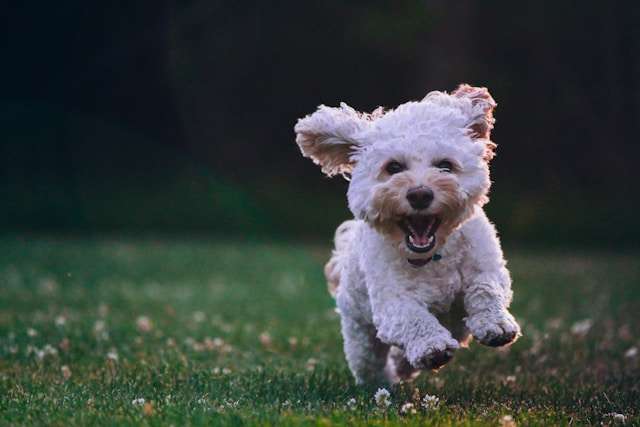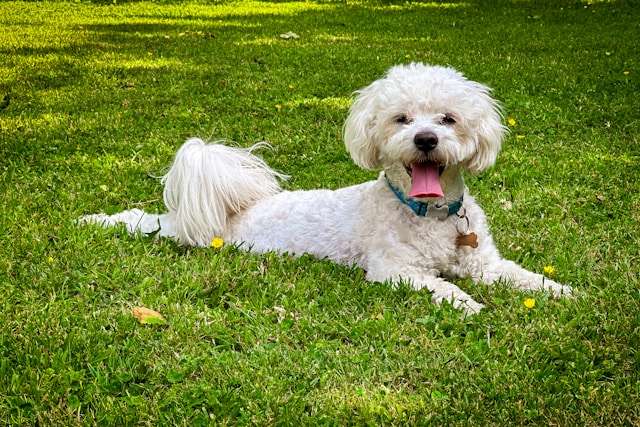The Ultimate Guide to Labradoodle Care: Tips for New Owners

The Ultimate Guide to Labradoodle Care: Tips for New Owners. Labradoodles have won dog lovers’ hearts across the globe, and my personal experience shows why these intelligent and affectionate dogs have become such excellent companions. The perfect blend of Labrador Retriever and Poodle traits makes them truly special.
A mini Labradoodle might suit your apartment life perfectly, or you might want a puppy that grows up with your family. These beautiful dogs come in various sizes, need different grooming styles, and have specific life expectancy patterns that potential owners should understand.
This detailed guide will help you master every aspect of Labradoodle care. Your furry friend deserves the best life possible, so we’ll explore daily routines, grooming needs, health care, and training techniques that work.
Table of Contents
Understanding Your Labradoodle’s Needs
Understanding your Labradoodle’s needs is vital to ensuring their well-being. Let me share what I’ve learned about these wonderful companions and help your furry friend thrive.
Physical and mental exercise requirements
Labradoodles are naturally energetic dogs that need regular exercise to stay healthy and happy. Standard Labradoodles need about 60 minutes of exercise twice daily [1], and mini Labradoodles require approximately 45 minutes twice daily [1].
Your Labradoodle will stay engaged if you mix up exercise routines. These activities work great off the top of my head:
- Swimming (they’re natural water lovers!)
- Playing fetch
- Interactive games with family members
- Running with other dogs
Mental stimulation is just as significant as physical exercise. A mentally stimulated Labradoodle shows improved behavior and reduced anxiety [2]. Their minds stay sharp through puzzle toys, training sessions, and new learning experiences.
Social and emotional needs
Labradoodles are incredibly social creatures that behave as with small children – playful, busy, and eager to please [3]. Their puppy-like enthusiasm stays strong even in their senior years, which makes them excellent family companions.
Regular socialization shapes their emotional well-being. The critical socialization window spans between 3 and 16 weeks of age [4]. Positive social experiences should continue throughout their lives. This approach builds confidence and prevents anxiety and behavioral problems.
Space and environment considerations
Labradoodles adapt to living spaces of all sizes, but they need enough room to move comfortably [5]. Your home should have a designated safe zone with:
- A comfortable bed
- Easy access to fresh water
- Appropriate toys for mental stimulation
- Space for stretching and indoor play
Note that a well-laid-out environment prevents destructive behaviors caused by boredom [6]. A consistent routine and adequate space help Labradoodles feel secure and content.
Essential Daily Care Routines
Your Labradoodle needs proper daily care routines to stay healthy and happy. In my experience, these smart dogs thrive best with consistent care.
Creating a balanced schedule
Labradoodles do best with structured routines. Puppies under 6 months need four meals daily – studies show the best times are 8 AM, 12:30 PM, 4:30 PM, and 8:30 PM [7]. The feeding schedule changes as they grow. By 12 weeks, they move to three meals; at 6 months, they’re ready for two meals daily [7].
Feeding and nutrition guidelines
Proper nutrition is vital to your Labradoodle’s health. Adult dogs should eat twice daily, with meals 12 hours apart [8]. Their diet must include:
- High-quality protein to maintain muscles
- Essential fatty acids for a healthy coat
- Limited ingredients if they have allergies
- Fresh water is always within reach
Labradoodle puppies weighing 20-35 kg need 275-420 grams of food daily [9]. These eager eaters can gain weight quickly, so oversee their portions [10].
Exercise and playtime structure
The ideal exercise routine includes 60-90 minutes of activity daily [11], broken into several sessions. Different activities keep your dog interested:
Morning routine: A brisk 30-minute walk or jog
Afternoon activities: Interactive play with puzzle toys
Evening exercise: Swimming or fetch games
Training sessions throughout the day provide mental stimulation. A tired Labradoodle usually behaves better [11]. Puppies need special attention – stick to the five-minute rule per month of age for structured exercise [12].
Mastering Labradoodle Grooming
My years as a Labradoodle enthusiast taught me that becoming skilled at grooming is vital to keep these adorable dogs’ signature looks. Let me share what I know about keeping your Labradoodle looking and feeling their best.
Coat-type identification and care
Labradoodles have three distinct coat types, and each needs exceptional care. The wool coat looks like a Poodle’s – dense and curly – and requires daily brushing so it won’t mat [13]. The fleece coat is my favorite because it’s easier to manage, and you only need to brush it every 2-3 days [14]. The hair coat doesn’t show up as much, but it’s the easiest to care for since you need to brush it a few times weekly [15].
Your pup’s coat changes between 6 and 8 months old, and that’s when daily grooming becomes a must [15]. This change can last several weeks. The new coat will mat badly if you don’t care for it.
Professional vs. home grooming tips
Taking your dog to a professional groomer every 6-8 weeks keeps their coat in great shape [13]. I’ve worked out a good routine between visits that helps:
- Brush before bathing so mats don’t get tighter
- Use hypoallergenic dog shampoo that’s gentle on the skin
- Make sure the coat dries completely to avoid matting
- Pay extra attention to ears and collar area
The “teddy bear” look makes me smile, so I always ask my groomer to skip the traditional poodle cut [16]. I prefer a natural, relaxed style that follows the body’s shape.
Essential grooming tools and products
My perfect toolkit came together after years of grooming experience:
Must-have items:
- Slicker brush for daily care
- Metal greyhound comb to find hidden mats
- Professional-grade clippers for trimming
- Blunt-tipped scissors around the face
- Detangling spray for tough knots [16]
My Labradoodle gets a bath every 3-4 weeks [16]. I’m careful not to bathe too often since it can remove natural oils from the coat. A light water spray helps maintain those beautiful curls or waves between baths [14].
Health Monitoring and Maintenance
Keeping our Labradoodles’ health in check requires constant alertness and a deep understanding of their unique characteristics. My experience has helped me develop a complete approach to keeping these beloved companions healthy. We can catch health issues early before they become serious problems.
Common health issues to watch for
Labradoodles can inherit health conditions from both parent breeds. Hip dysplasia remains one of the most common concerns, especially when you have standard-sized Labradoodles [17]. Signs like difficulty rising and reduced mobility in the hindlimbs need careful attention.
We noticed ear infections frequently in dogs because their floppy ears trap moisture [17]. Research shows that dogs with pendulous ears and heavy ear canal hair get more ear infections [17].
These conditions need regular monitoring:
- Progressive retinal atrophy (affecting vision)
- Allergies (both environmental and food-related)
- Addison’s disease (inherited from Poodle genetics) [18]
- Elbow dysplasia (common in larger sizes) [18]
Preventive care measures
Prevention works better than treatment. Your Labradoodle needs regular vet check-ups, with at least one yearly visit to examine everything [19]. Here’s my preventive care schedule:
| Care Type | Frequency | Purpose |
|---|---|---|
| Dental cleaning | Daily | Prevent periodontal disease |
| Ear inspection | Weekly | Monitor for infections |
| Weight check | Monthly | Prevent joint issues |
| Vet visit | Annually | Complete health screening |
Puppies need three rounds of vaccinations: the first at 8-10 weeks, the second at 12-14 weeks, and the final at 16-18 weeks [20]. This schedule gives them the best protection against common diseases.
When to seek veterinary care
Experience taught me to spot symptoms that need immediate vet attention. Seek immediate care if you notice:
- Sudden changes in appetite or energy levels [19]
- Difficulty breathing or persistent coughing
- Unusual swelling or lameness
- Signs of ear infections (head shaking, pawing at ears) [17]
Quick intervention often prevents minor issues from becoming serious health problems. Early detection of hip dysplasia allows us to manage it better through proper diet and exercise changes [17].
Training and Socialization Strategies
Training intelligent Labradoodles brings me joy. I’ve seen how they respond to positive reinforcement techniques. Let me share proven strategies to develop a well-behaved companion.
Simple obedience training techniques
Positive reinforcement with treats and praise works best. Teaching commands follow a specific sequence:
- “Sit” – Hold a treat above the nose, moving back overhead
- “Stay” – Start with short distances, gradually increasing
- “Come” – Use happy voice tones and immediate rewards
- “Drop it” – Practice with two similar toys for exchanges [21]
Labradoodles respond exceptionally well to food rewards and praise. This helps build a robust training bond [21]. The best results come from short, fun training sessions, typically 10-15 minutes.
Addressing common behavioral issues
My experience has revealed several challenges Labradoodles face. Separation anxiety leads the list, with excessive barking and chewing behaviors following close behind [22]. Here’s how I tackle these through structured training:
Separation anxiety improves when alone time is gradually increased while engaging toys are provided. Dogs often bark due to excitement or attention-seeking, but I manage this through consistent “quiet” command training [23].
Regular exercise and appropriate chew toys substantially reduce destructive chewing [22]. Professional training support helps with more challenging cases [23].
Socialization tips and timeline
The vital socialization period spans from 4-16 weeks [24]. Here’s my socialization timeline:
8-12 weeks:
- Introduce various surfaces and textures
- Expose to household sounds
- Begin gentle handling exercises [25]
12-16 weeks:
- Arrange playdates with vaccinated dogs
- Visit different environments
- Practice car rides and new experiences [24]
Positive associations matter during socialization. I watch for signs of fear or stress and never force interactions [25]. Treats and praise help build confidence gradually.
Puppy kindergarten classes after vaccinations provide excellent results [26]. These environments offer safe opportunities for vital dog-to-dog interactions while reinforcing simple training principles.
Labradoodles need ongoing socialization to maintain their friendly temperament [24]. Exposure to new experiences beyond puppyhood prevents behavioral issues from developing later.
Conclusion
Labradoodles shine as remarkable companions that combine intelligence, affection, and adaptability. My experience shows that these wonderful dogs thrive when their core needs are met—regular exercise, proper grooming, consistent training, and preventive healthcare.
Labradoodle care might need attention initially, but the rewards surpass the effort by miles. Their loving nature and eager-to-please personality make daily routines and training sessions flow smoothly. My time with these dogs proves that dedicated care guides them to become happy, well-adjusted companions who bring joy and energy to any home.
Each Labradoodle has a unique personality, so you’ll want to adjust these guidelines to match your dog’s needs. The simple care routines we’ve covered here will help your furry friend flourish when applied consistently. Your dedication to proper care will create an unbreakable bond filled with countless memorable moments together.
FAQs
Are Labradoodles suitable for first-time dog owners?
some dog experience. They are intelligent and eager to please, which makes training easier. However, they require plenty of mental stimulation and physical exercise to prevent boredom and potentially
Labradoodles can be great for confident first-time owners withdestructive behavior. While they can tolerate short periods alone, they may develop separation anxiety if left for extended periods.
What are some potential challenges of owning a Labradoodle?
Labradoodles need significant daily exercise to stay healthy and happy. Without adequate physical activity, they may become restless or develop behavioral issues. They’re not ideal for people with busy lifestyles who can’t dedicate time to their care. Additionally, their high-maintenance grooming needs and potential for separation anxiety can be challenging for some owners.- How much care do Labradoodles require?
Labradoodles are high-maintenance dogs that require a lot of time and attention. They need regular grooming, including daily brushing for some coat types, to prevent matting. They also require consistent exercise, mental stimulation, and training. Their social nature means they thrive on interaction with their family and may not do well if left alone for long periods.
What’s the best approach to disciplining a Labradoodle?
Labradoodles respond best to positive reinforcement training methods. They are eager to please, so a firm but gentle “no” can be effective for unwanted behaviors. Ignoring undesirable actions while rewarding good behavior is often successful. Consistency in training and establishing clear rules are vital to disciplining a Labradoodle effectively.How can I prepare to bring a Labradoodle puppy home?
To prepare for your Labradoodle puppy, ensure you have a safe, comfortable spacein your home. Stock up on high-quality puppy food, appropriate toys, and grooming supplies. Plan for regular veterinary check-ups and vaccinations. Establish a consistent routine for feeding, exercise, and training. Puppy-proof your living areas to prevent accidents and keep your new pet safe.
Can Labradoodles adapt well to apartment living?
Labradoodles can adapt to apartment living if their exercise and mental stimulation needs are met. Regular walks, playtime, and trips to dog parks are essential. Ensure you have space for indoor play, and consider how you’ll manage their energy levels in a smaller living space. Their adaptability makes them suitable for various living situations, provided their needs are met.How often should I groom my Labradoodle?
Grooming frequency depends on your Labradoodle’s coat type. Wool coats require daily brushing, fleece coats need brushing every 2-3 days, and hair coats can be brushed a few times a week. Professional grooming is recommended every 6-8 weeks. Regular ear cleaning, nail trimming, and dental care are essential to their grooming routine.What health issues should I watch for in my Labradoodle?
Common health issues in Labradoodles include hip dysplasia, ear infections, progressive retinal atrophy, allergies, and Addison’s disease. Regular vet check-ups, maintaining a healthy weight, and watching for signs of discomfort or changes in behavior can help catch potential health problems early.
References
[1] – https://www.dogster.com/dog-health-care/how-much-exercise-does-my-labradoodle-need
[2] – https://snowyriverdoodle.com/labradoodle-mental-stimulation-guide/
[3] – https://www.petplan.co.uk/pet-information/dog/breed/labradoodle/
[4] – https://snowyriverdoodle.com/benefits-socialization-labradoodle-early/
[5] – https://hiddenspringslabradoodles.com/blog/labradoodle-size/
[6] – https://burrinjucklabradoodles.com.au/mental-stimulation/
[7] – https://www.lomondhillslabradoodles.co.uk/labradoodle-feeding-information/
[8] – https://www.petmd.com/dog/breeds/labradoodle
[9] – https://www.hypropremium.com.au/labradoodle-feeding-guide/
[10] – https://www.burgesspetcare.com/blog/dogs/whats-the-best-dog-food-for-labradoodles/
[11] – https://snowyriverdoodle.com/labradoodle-exercise-guide/
[12] – https://www.pitpat.com/exercise/how-much-exercise-does-a-labradoodle-need/?srsltid=AfmBOooZjePrsnejYKcOZFybg-6wqQh1d3M0AFgH_Fvag-fiO75exJrD
[13] – https://allaboutthedoodles.com/blogs/how-often-should-i-groom-my-labradoodle
[14] – https://www.fokkerpetfood.com/en/blog/this-is-how-you-take-care-of-your-labradoodles-fleece-coat.html
[15] – https://sh-labradoodles.biz/coattypes/
[16] – https://www.wala-labradoodles.org/grooming-care
[17] – https://paworigins.com/blogs/vet-blogs/the-ultimate-guide-to-labradoodle-health
[18] – https://www.healthypawspetinsurance.com/blog/breed-guide-labradoodles
[19] – https://www.labradoodlesbycucciolini.ca/labradoodle-healthcare-tips/
[20] – https://legendarylabradoodles.com/llhcmg-vet-care.html
[21] – https://allaboutthedoodles.com/blogs/what-kind-of-training-does-a-labradoodle-puppy-need
[22] – https://snowyriverdoodle.com/labradoodle-behavior-problems/
[23] – https://www.labradoodlesbycucciolini.ca/5-labradoodle-behaviors-to-nip-in-the-bud-early/
[24] – https://allaboutthedoodles.com/blogs/how-to-socialize-your-labradoodle-puppy-effectively
[25] – https://www.bowvalleylabradoodles.com/puppy-development-stages
[26] – https://www.txlabradoodles.com/prepare-for-your-new-puppy/







One Comment